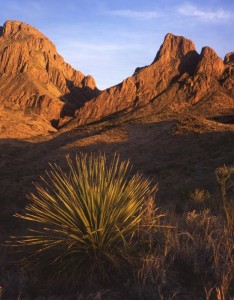Last year, as the holidays drew near, I was looking for a way to immerse myself in the festive spirit when I decided to play some Christmas Carols. Amidst a hectic schedule and the distractions of politics, the quintessential Christmas feeling seemed elusive. I realized that scents and sounds possess a profound ability to trigger memories and evoke nostalgia.
During the holiday season, we bring out a collection of Christmas carol plates from the 1980s by Royal Doulton. These beautifully crafted plates not only add a touch of elegance to our decor but also serve as a nostalgic reminder of past celebrations. To enhance our festive atmosphere, I decided to play the Christmas carols on these plates, creating a sensory experience that brings everyone into the holiday mood.
Christmas carols are more than just melodies; they are timeless stories that connect us across generations and cultures. From the serene “Silent Night” to the joyful “We Wish You a Merry Christmas,” each carol carries rich origins and enduring charm.
Originally stemming from medieval pagan Winter Solstice celebrations, carols were songs of dance, praise, and joy. As Christianity spread, these festive tunes were adapted to celebrate Christmas, preserving their spirited essence. The Victorian era revitalized caroling traditions, with influences like Charles Dickens’ “A Christmas Carol” shaping modern celebrations. Globally, carols such as Spain’s “Feliz Navidad” have added diverse flavors to the repertoire.
Today, Christmas carols encompass a variety of musical styles, with jazzy renditions standing out for their lively appeal. Embracing the tradition of community singing, I’m sharing this virtual caroling experience to unite friends and family worldwide. This approach keeps the spirit of caroling vibrant and meaningful, even when we’re apart.
“I Saw Three Ships” is a beloved traditional Christmas carol that dates back to the 17th century, originating from the coastal regions of England. The charming melody and simple, evocative lyrics depict the joyous arrival of three ships laden with treasures, symbolizing the gifts of the Magi and the spirit of giving that defines the holiday season. Often sung with lively harmony, this carol captures the excitement and wonder of Christmas Eve, bringing warmth and cheer to gatherings. Its enduring popularity lies in its ability to evoke vivid imagery and foster a sense of community as families and friends come together to celebrate the festive spirit.
I Saw Three Ships (Come Sailing In)
While Shepherds Watched Their Flocks
“While Shepherds Watched Their Flocks” is a cherished Christmas carol that tells the serene story of the shepherds who first received the divine announcement of Jesus Christ’s birth. Originating in the early 19th century, the carol draws inspiration from the biblical account in the Gospel of Luke, highlighting themes of humility, awe, and divine intervention. Its gentle melody and heartfelt lyrics create a peaceful ambiance, reflecting the quiet night when angels proclaimed the good news. Often performed in churches and holiday gatherings, “While Shepherds Watched Their Flocks” serves as a poignant reminder of the true spirit of Christmas, celebrating faith and the miraculous events of that holy night.
“The Holly and the Ivy” is a timeless Christmas carol with roots that trace back to medieval England, though its exact origins remain somewhat obscure. This traditional song beautifully intertwines Christian symbolism with natural imagery, using the holly and ivy plants as metaphors for the Holy Trinity and eternal life. The carol’s soothing melody and evocative lyrics celebrate the beauty of the winter season and the joyous spirit of Christmas. Over the centuries, “The Holly and the Ivy” has been embraced by various cultures and artists, each adding their unique interpretations while maintaining its heartfelt essence. Whether sung in churches, homes, or festive gatherings, this carol continues to evoke warmth and reverence, making it a beloved staple of holiday celebrations around the world.
The Holly and the Ivy
Hark! The Herald Angels Sing
“Hark! The Herald Angels Sing” is one of the most celebrated and widely recognized Christmas carols, first published in 1739 with lyrics by Charles Wesley and later adapted by George Whitefield. The carol vividly narrates the joyous announcement of Jesus Christ’s birth by the angels to the shepherds, emphasizing themes of peace, goodwill, and divine love. Its uplifting melody and powerful lyrics have made it a staple in Christmas services, concerts, and festive gatherings around the world. Over the years, numerous artists have reimagined the song, infusing it with various musical styles while retaining its inspirational message. “Hark! The Herald Angels Sing” continues to inspire and uplift listeners, embodying the true spirit of the holiday season.





